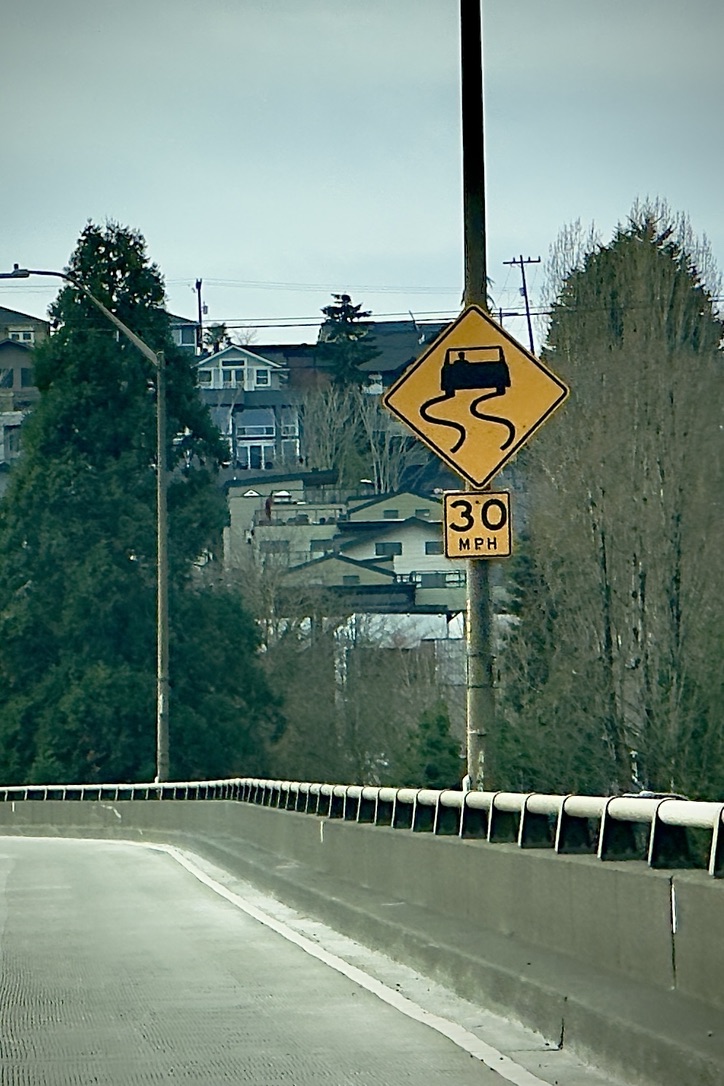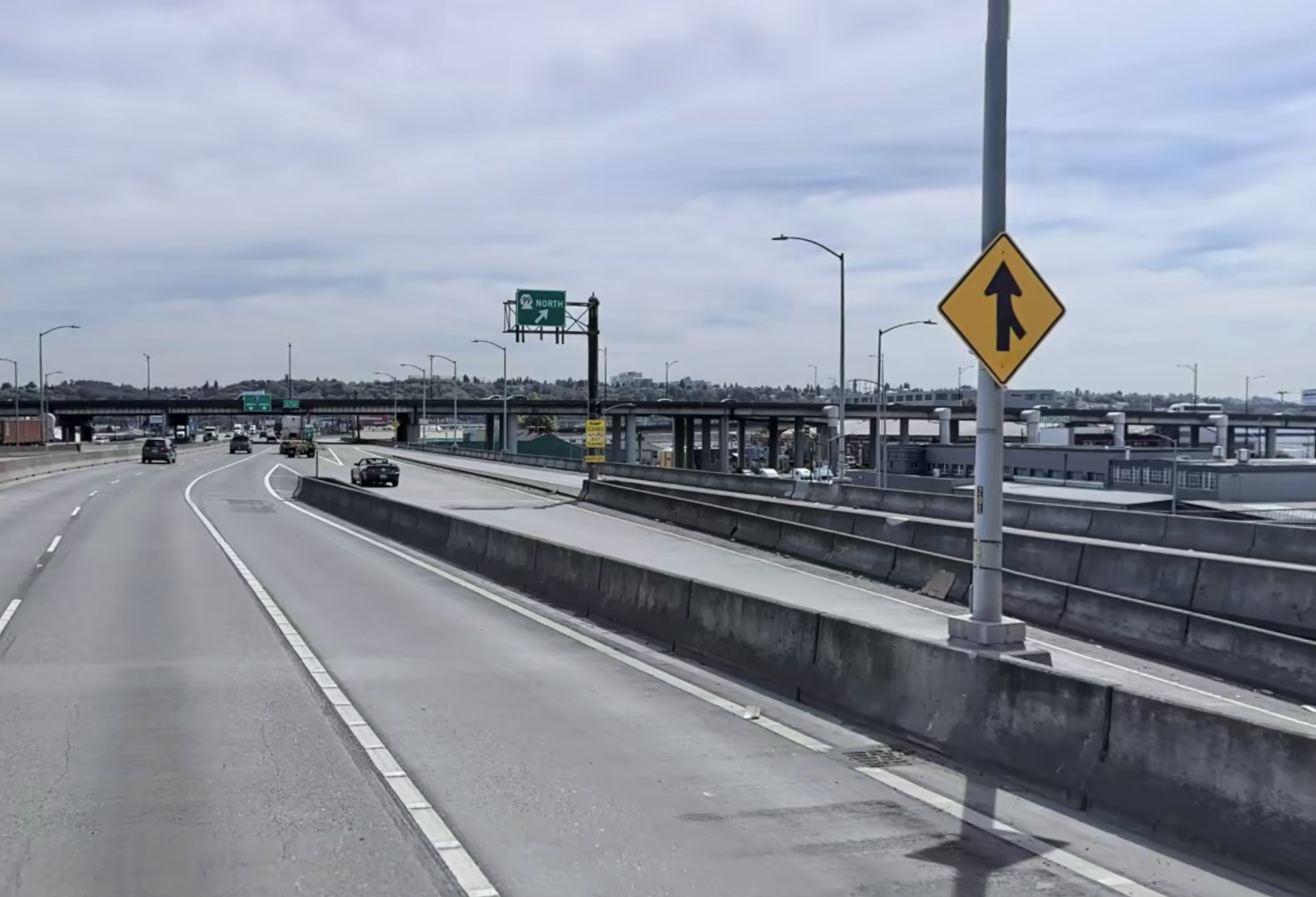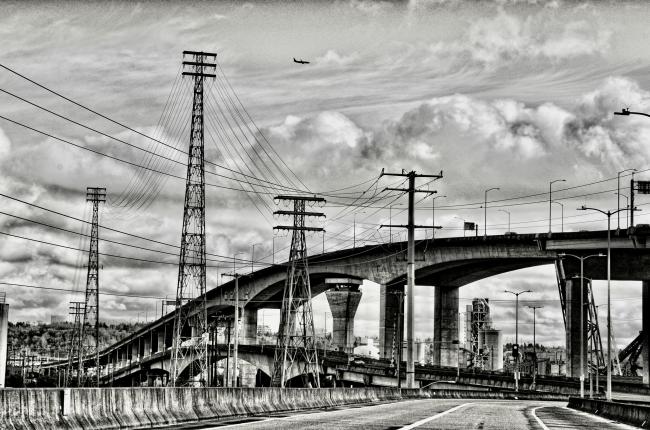Q & A with SDOT about signage, safety and the West Seattle Bridge
The West Seattle Bridge, which was closed for nearly 2.5 years starting in March 2020, has been the scene of multiple motor vehicle incidents recently.
Photo by Patrick Robinson
Fri, 04/04/2025
The number of motor vehicle incidents on the West Seattle Bridge recently prompted Westside Seattle to reach out to the Seattle Department of Transportation with some questions.
Question 1
Do you have facts and data on the number, time of day, and cause of crashes on the West Seattle Bridge?
Answer 1
The City maintains a database of all police-reported collisions that happen on city streets, including the West Seattle Bridge. You can access it here: https://data.seattle.gov/. We have not created summaries of collision data that break down crashes by time of day, location, or cause for the entire West Seattle Bridge.

Question 2
Do you have studies underway on the pavement switch as you reach the curve approaching the top of the hill?
Answer 2
Yes, we’ve been reviewing collisions specifically at this curve. Before the West Seattle Bridge closed, we saw a pattern of westbound crashes entering the curve near the SW Admiral Way alignment. Our review shows that collision patterns have changed since the West Seattle Bridge has reopened, with fewer collisions near the SW Admiral Way and more occurring further southwest.
Question 3
What is the sequence of remedies ? Signage, Channelling the pavement, Speed warning signs and Speed cameras?
Answer 3
This year we plan to add safety enhancements to encourage drivers to slow down at a safer speed when approaching the curve. We are currently considering various short-term treatments such as warning signs, raised pavement markings, and/or reflective markings.
For the long term, we’re studying two ways to improve pavement traction in this area:
- Grinding down the top layer of pavement
- Applying a high-friction surface treatment
We’re considering the pros and cons of each option to determine if either one makes sense in this area. If we move forward, we’ll need to schedule the work based on available funding, crews, weather, and traffic impacts.

Question 4
What is the cost of installing speed cameras on the bridge? Does the city currently employ speed ticketing cameras anywhere outside school zones? Is this under consideration?
Answer 4
The City of Seattle does not currently employ full-time speed cameras within Seattle. Full-time speed cameras have been allowable within certain zones under state law since 2022, and the City Council passed an Ordinance in 2023 to locally adopt that new authority.
In 2024, the State Legislature modified the types of zones full-time speed cameras are allowable within, and the City is currently working to introduce legislation to adopt those modified provisions within the Seattle Municipal Code. Because our current vendor contract doesn’t include full-time speed cameras, we’d need to negotiate pricing. For these cameras to be installed, the City Council would need to pass new legislation and fund the departments that would manage the program.
Question 5
Are there any plans in place to address this lack of driver information? What does it cost to put up that kind of signage?
Is SDOT able to do this or must it go through a legislative process with the city council?
Answer 5
Costly improvements may require City Council budget approval, but lower-cost signage upgrades can often be funded within existing City programs. A basic sign can cost $1,000–$2,000, but costs can rise quickly if installation is complex—such as mounting it to a structure like the Spokane St Viaduct.
Question 6
Can the Jersey barrier be painted yellow? can "CAUTION merge left" be put on a sign or on the roadbed? Something else?

Answer 6
At this location, the right lane of the West Seattle Bridge is restricted to buses-only, meaning general purpose and freight vehicles are not allowed to use the lane. The bus-only restriction ends approximately 300 feet east of where vehicles begin to merge from the eastbound SW Spokane St Bridge on ramp. This separation between the merge point and the end of the restriction is intended to provide some separation between those already in the eastbound mainline lanes of the West Seattle Bridge intending to use the 1stAve S off ramp and those merging from the SW Spokane St on ramp. A review of the collision data over the past three years does not show a trend of collisions associated with this weaving. The signage in place today is consistent with current federal and local standards and guidance, so no modifications can be prioritized at this time.
The lane markings at this merge are in good condition following a recent bridge deck rehabilitation project completed last year. Additionally, we are planning to replace the existing crash cushion just east of this location. During that work, we can consider any remarking needs or improvements to the merge area.
Question 7
Almost invariably as drivers come off the crest of the hill on the bridge westbound, they accelerate as they approach the hill. The psychology of the roadway has to be something you folks consider. In a previous communication about this you indicated this was under review. What is the status of that review?
Are the traffic engineers trained or others on SDOT staff trained in road and driving psychology?
ANSWER 7
Yes, SDOT traffic engineers are trained in and consider human factors—such as driver behavior and perception—when designing roads and traffic controls. Over time, our understanding of how road design influences driver behavior has improved, but many older roads were built in ways that encourage higher speeds. We often look for low-cost ways to improve safety outcomes by influencing driver’s perception before we move to more costly redesigns. While we haven’t finalized any specific changes yet for the West Seattle Bridge, as mentioned above, we plan to add quick-build safety enhancements this year to help drivers slow down before the curve.


